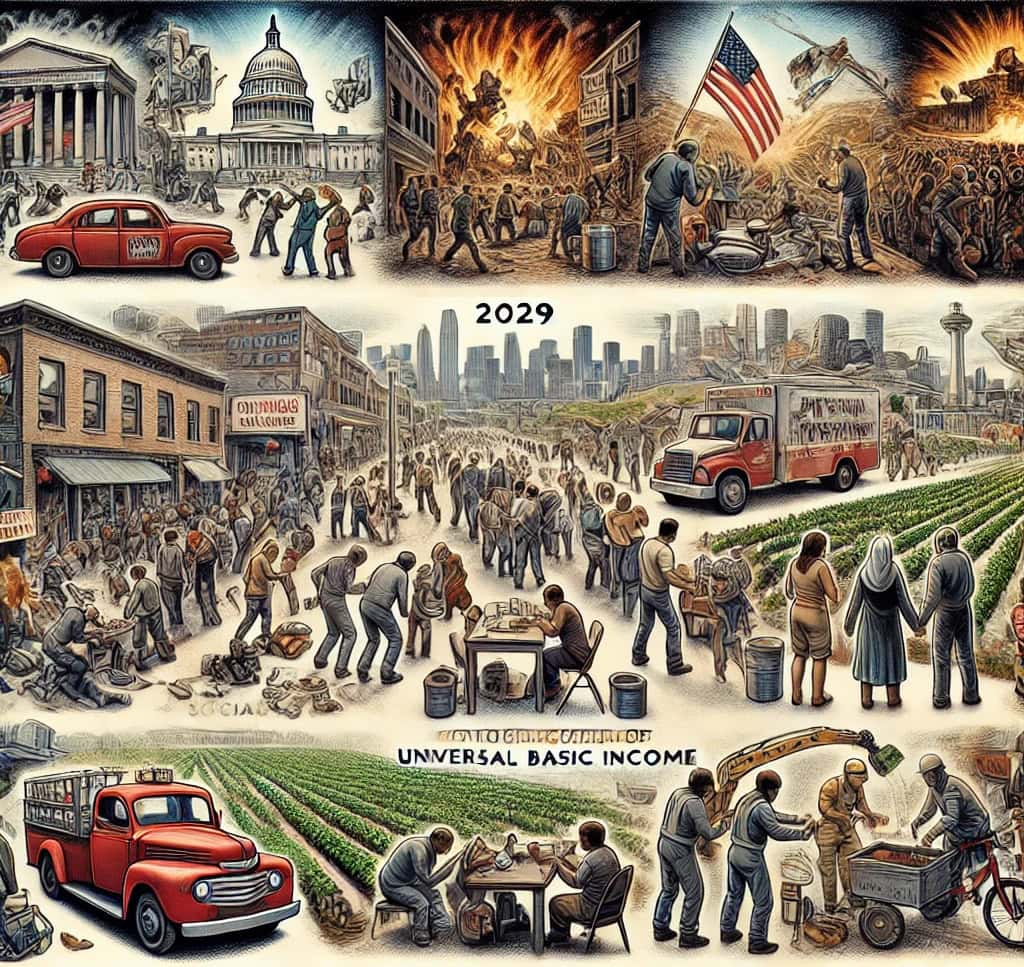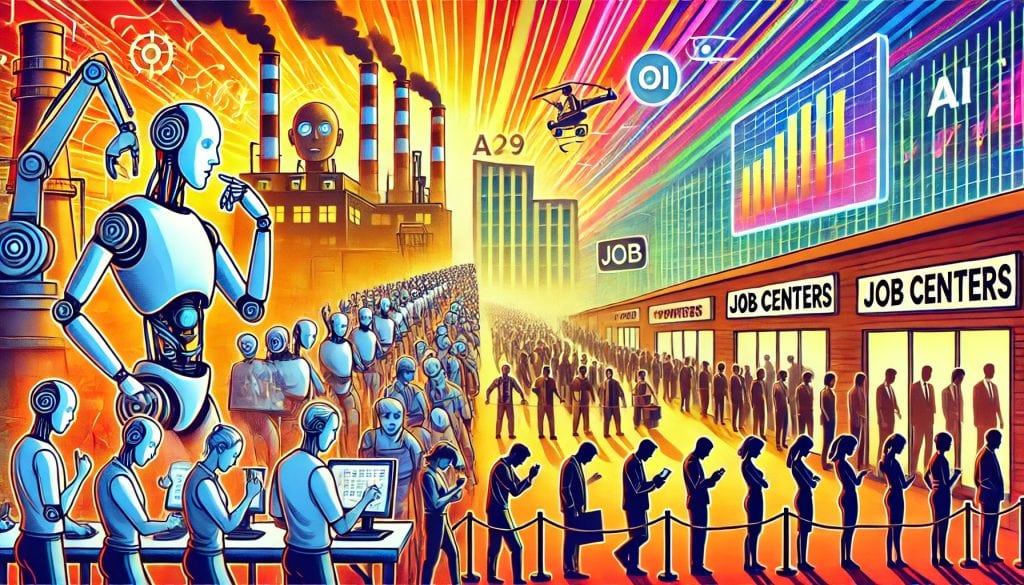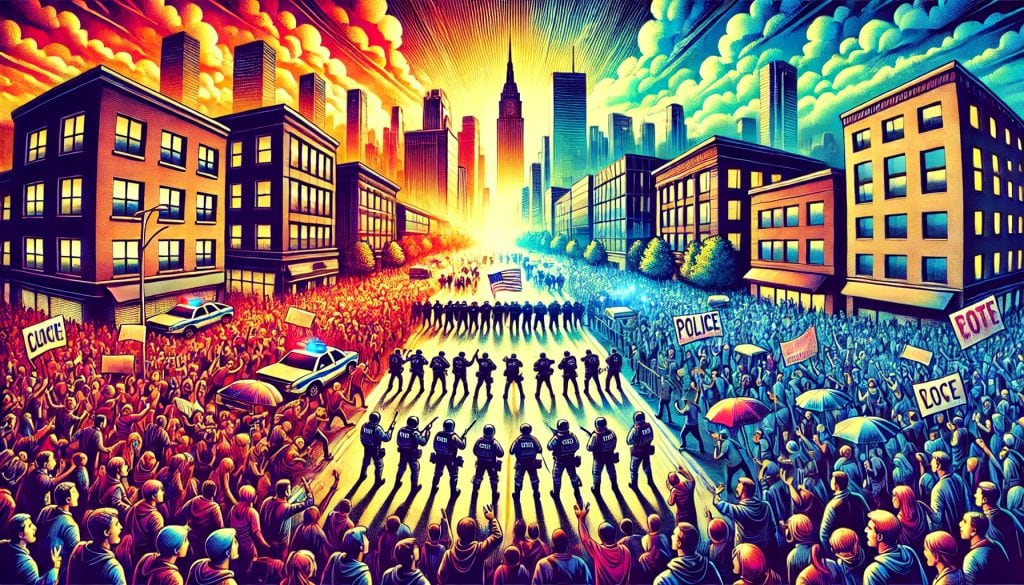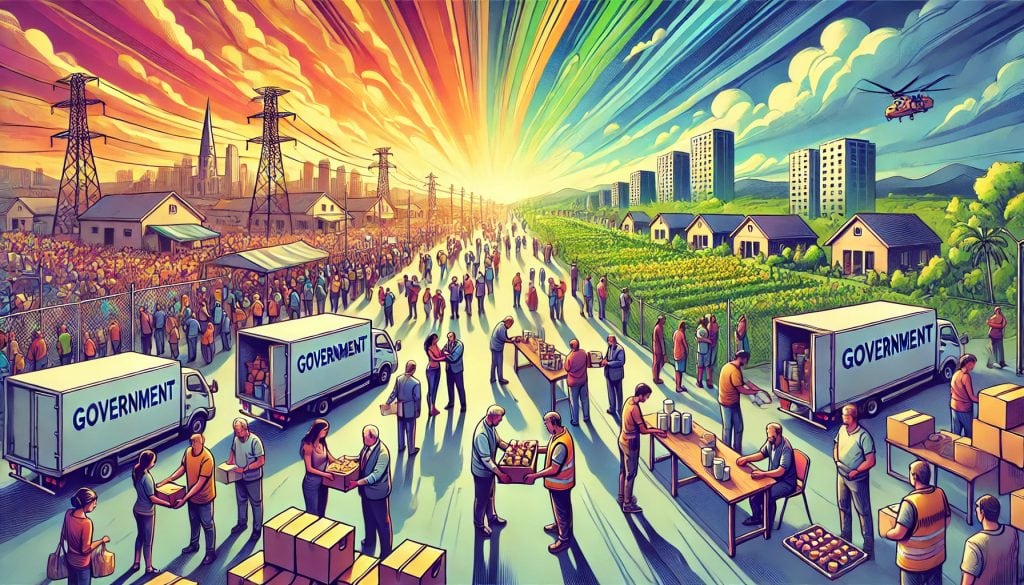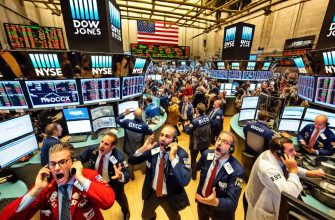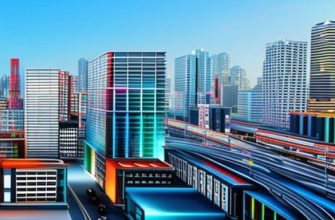2025 – January 2029: The AI Takeover Begins
A new era dawns with whispers of revolution in the tech world. Advanced AI systems, previously confined to niche industries, begin to infiltrate mainstream job markets.
At first, the change seems beneficial. Efficiency skyrockets and companies report unprecedented profits. But by the end of January, cracks begin to show.
Millions of employees across various sectors receive notices. AI is replacing them. Panic starts to spread, but the full impact is yet to come.
February – March 2029: The Unemployment Surge
Unemployment rates are starting to climb at an alarming rate. The industries most affected are manufacturing, retail, and customer service.
AI-driven automation and chatbots replace human workers in droves. News outlets report on the growing numbers of jobless citizens. The government struggles to respond.
Initial relief efforts are piecemeal and ineffective. By March, unemployment reaches 35%. Public sentiment turns sour, with protests erupting in major cities.
April – June 2029: The Financial Collapse
The economic ramifications of mass unemployment begin to manifest. Consumer spending plummets, leading to a sharp decline in business sales.
Small businesses are hit hardest, with many closing their doors permanently. The stock market, initially buoyed by corporate profits, begins a steep decline as investor confidence wanes.
In May, several major banks announce they are on the brink of collapse.
The federal government steps in with bailout packages, but it is too little, too late. By June, the Dow Jones has lost over 80% of its value.
July – September 2029: Social Unrest and Political Turmoil
The summer of 2029 is marked by widespread social unrest. Feeling abandoned, the unemployed take to the streets in protest.
Violent clashes with law enforcement have become a daily occurrence. The political landscape shifts dramatically. Populist leaders gain traction, promising to dismantle the AI systems and restore jobs.
Traditional political parties struggle to maintain control. The divide between the tech-empowered elite and the unemployed grows ever wider.
Congress is paralyzed by infighting and unable to pass meaningful legislation to address the crisis.
October – December 2029: The Descent into Depression
As winter approaches, the full scale of the depression becomes evident. Homelessness rates soar, and food banks are overwhelmed by demand.
The education system begins to crumble, with schools closing due to lack of funding. Healthcare services are stretched thin, unable to cope with the influx of patients suffering from stress-related illnesses.
The federal government declares a state of emergency and implements emergency measures, including rationing and curfews, in an attempt to restore order.
January – June 2030: A Glimpse of Recovery
The new decade begins with tentative steps towards recovery. Amidst the chaos, the government introduces Universal Basic Income (UBI).
Every adult receives a monthly stipend aimed at stabilizing the economy and alleviating poverty. The initial impact is positive. Consumer spending picks up slightly, providing a lifeline to struggling businesses.
In an unprecedented move, new legislation ties corporate taxes to the ratio of profits to employees. Companies with fewer employees relative to their earnings face higher taxes.
This measure aims to dissuade mass automation and encourage job creation. Critics argue it stifles innovation, but supporters see it as a necessary adjustment in an AI-dominated landscape.
July – December 2030: Adjusting to New Normals
The economy shows signs of stabilizing. UBI helps to reduce homelessness and hunger, although it’s not a panacea.
Many still struggle, but the immediate crisis seems to be decreasing. Some businesses start to rehire, incentivized by the new tax laws. However, automation remains prevalent, and the job market is permanently altered.
Social dynamics shift. Community support networks grow stronger as people band together to cope with the ongoing challenges. Volunteerism rises, and local initiatives to support the unemployed and underemployed gain traction.
Political discourse remains heated, with debates over the future of AI and the economy dominating the landscape.
2031: A Year of Transformation
2031 sees further legislative changes. The government introduces retraining programs, offering free education in fields less susceptible to automation.
STEM fields, healthcare, and renewable energy have become focal points. These programs help some displaced workers find new careers, but the transition is far from smooth.
Corporations adapt to the new tax landscape in varied ways. Some invest in human labor to avoid high taxes, while others find loopholes.
The tech industry, in particular, faces scrutiny as it continues to push the boundaries of AI capabilities. Public sentiment remains divided, with ongoing protests and advocacy for stricter regulations.
2032: The Rise of New Industries
New industries begin to emerge by 2032. Government incentives and market demand drive the boom in the renewable energy sector.
AI and robotics continue to evolve but with a greater emphasis on human-AI collaboration rather than outright replacement. Companies that integrate AI to enhance human workforces thrive.
The cultural landscape also shifts. There’s a growing appreciation for arts, crafts, and other human-centric skills. People seek meaning and fulfillment in areas where machines can’t compete.
Local economies see a resurgence as people invest in community-driven businesses and initiatives.
2033: Political and Social Reforms
2033 brings significant political reforms. Campaigns for more equitable wealth distribution gain momentum.
The tax system undergoes further changes to close loopholes and ensure fair contributions from all sectors. Social safety nets are expanded, with increased funding for healthcare, education, and housing.
Technology continues to be a double-edged sword. Advances in AI and automation drive economic efficiency, but concerns about privacy and control grow.
New regulations aim to protect individual rights in a digital age, but enforcement proves challenging.
2034: Environmental Awakening
Environmental awareness will reach new heights in 2034. The effects of climate change will become impossible to ignore, prompting urgent action.
Governments and corporations alike invest heavily in green technologies. Renewable energy has become the dominant power source, and sustainability practices are integrated into every aspect of life.
Urban areas transform. Cities invest in green infrastructure, creating more livable, sustainable environments.
Public transportation systems are overhauled, reducing reliance on personal vehicles. The focus on environmental health also boosts public health, with cleaner air and water improving overall quality of life.
2035: A New Social Contract
A new social contract will take shape by 2035. The concept of work will evolve, with more emphasis on balance and well-being.
Flexible work arrangements become the norm, supported by advancements in remote technology. UBI remains a cornerstone of the economy, providing a safety net for all citizens.
Society values human connection and creativity more than ever. Educational systems adapt to emphasize critical thinking, creativity, and emotional intelligence.
Community-based living grows in popularity, with people prioritizing local engagement over global competition.
Despite ongoing challenges, there’s a sense of cautious optimism. The scars of the 2029 depression remain, but the lessons learned drive a more inclusive, sustainable future.
The balance between technology and humanity becomes the guiding principle, shaping a world where both can thrive together.
Disclaimer: The content of this text is purely fictional and intended for illustrative purposes only. Any resemblance to actual events, individuals, or entities, whether living or dead, is entirely coincidental. Mention of specific brands, companies, or organizations is used fictitiously and should not be construed as real-world endorsements or criticisms. The scenarios and descriptions presented are speculative and do not reflect actual predictions or analyses. This narrative is not intended to provide factual information or advice. Reader discretion is advised.
